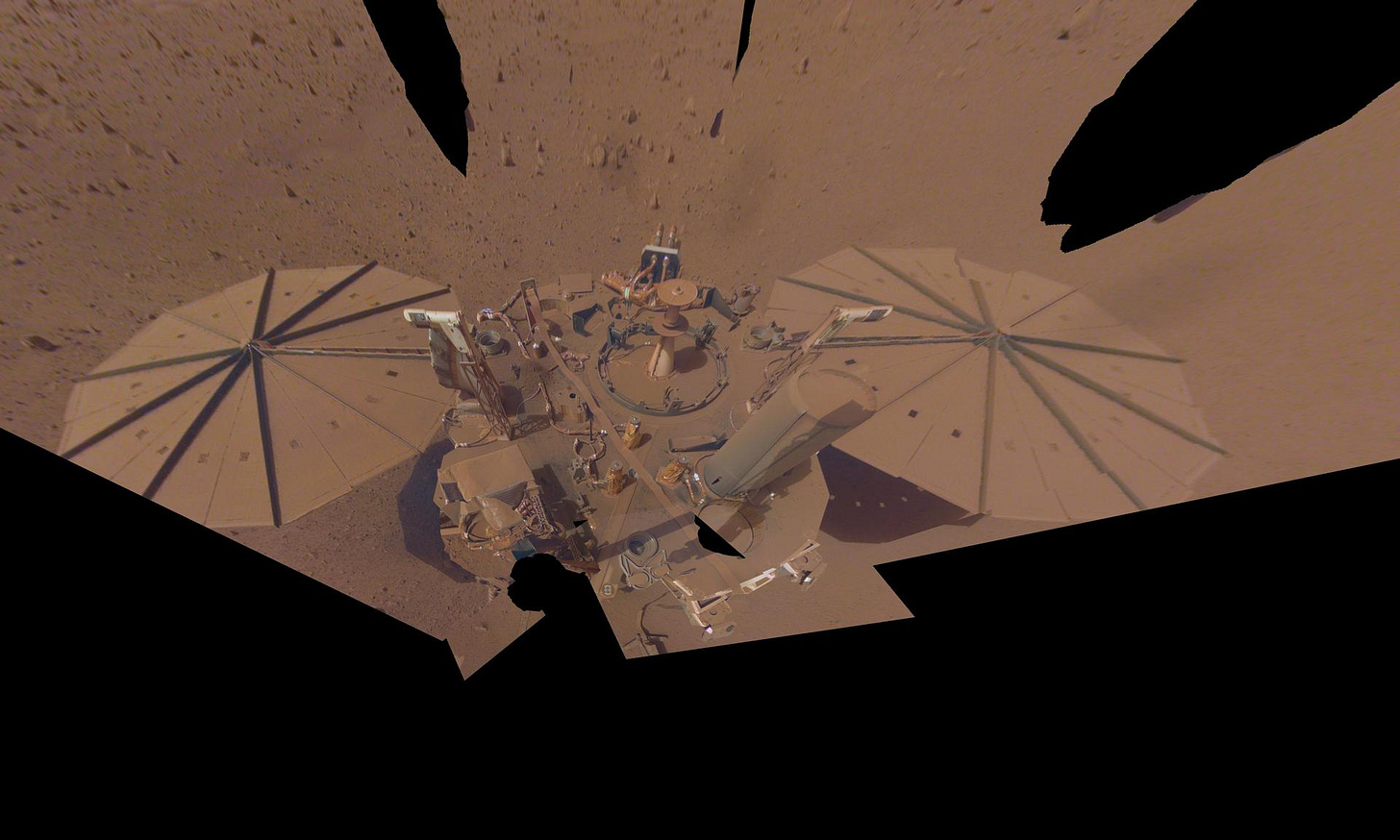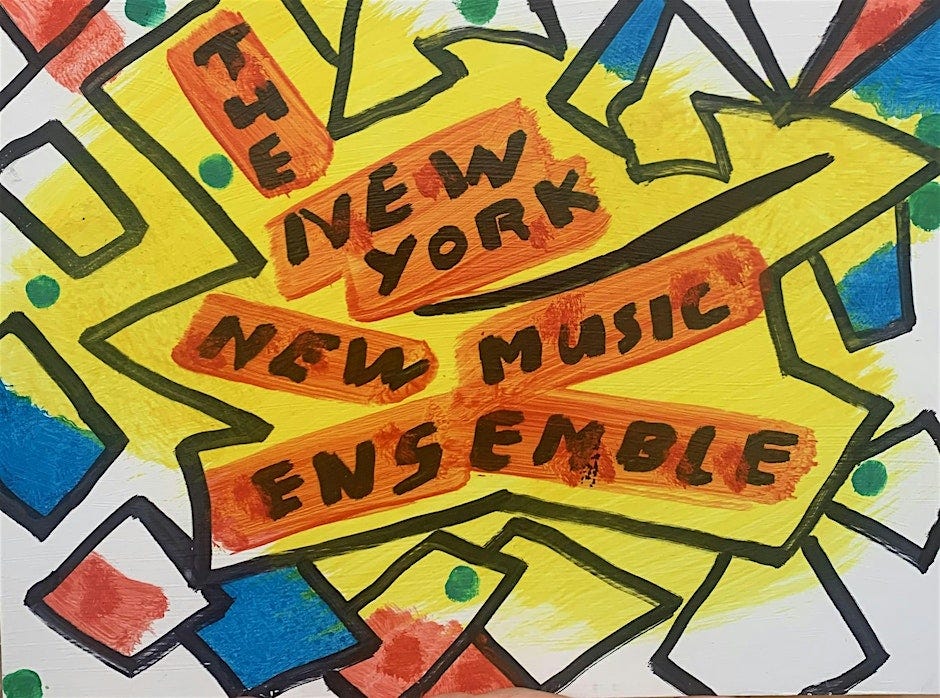Sampling NASA
Explore the open archive of NASA audio files, and hear "Launch Party" at New York New Music Ensemble's season opener.
Sputnik had an excellent beep.
History changed on Oct. 4, 1957, when the Soviet Union successfully launched Sputnik from the Baikonur Cosmodrome in Kazakhstan. The world’s first artificial satellite was about the size of a beach ball, about 23 inches in diameter and weighing less than 190 pounds.
The Beep
I love this beep. It’s got character. At approximately 1.07 kHz, its pitch is just north of a C6. I’m not sure what its real function was, but it gives the impression that it’s running the show. A space metronome!
This audio file and hundreds of others have been made available by NASA for non-commercial, educational, and informational use via their main audio page. The stories behind these samples are fascinating and unexpected1, and they are available for download as ringtones or, in my case, incredible sample-fodder.
I love playing with these sounds. In the case of the Sputnik beep I rinsed off some of the background noise and shifted the pitch down 22 cents to give it a little duo with a marimba, like two sonar signals trying to sync up.
This became the opening of a piece for piano trio + pre-recorded tape, called Launch Party
… which you can hear the New York New Music Ensemble perform live TONIGHT! October 28th, in New York. Ticket info below2
Launch Party
I had been looking for an excuse to dive deep into this NASA audio sample archive for years when I was asked to write something for Rocket City New Music’s opening concert of 2022. Set in the aerospace hub of Huntsville, Alabama, Rocket City serves a curious and scientifically-minded audience who would likely be familiar with the sources of the material.
Browsing through the database, I asked myself: what rhythm and pitch material are contained in these sounds? Could any of them be, for example: time-stretched, pitch-shifted, looped, chopped into bits, processed, etc, in order to make them serve musical functions?
While I enjoy studying pure mathematics and thinking about how it might apply to sound and music, I have very little experience with astronomy, physics, or the applied sciences. Thus, I was very hesitant to just start grabbing things that sound cool and using them without some context. There is an inviting and playful openness to everything NASA does, and I wanted to learn as much as I could about the materials.
I was thrilled to discover not only how vast their online offerings are, but also how approachable everything is. Learning about the sources of these sounds and the missions they came from was a pure joy, and I have tried to infuse that joy throughout the piece.
Here is an introduction to some of these sounds, their backstories, and musical use:
The Quindar Tones
Mission: Apollo 11
"These beeps are called 'Quindar-Tones'. Their purpose is to trigger the ground station transmitters when there is an outgoing transmission from Earth… When the CapCom presses his PTT button to start a transmission, an intro tone (2.525KHz sine wave with a length of 250ms) is generated and triggers the ground station transmitters to send. And when he is finished talking and releases the button again, a slightly lower outro tone (2.475KHz, sine, 250ms) is generated to trigger the ground station transmitters to turn off. So in short, these are remote control trigger tones.
In a nutshell, as a satellite orbits, it needs to connect to different communications centers on earth. The commander transfers the connection by syncing a series of tones.
Musical Use: “Using a series of tones to sync” resonates with me: it perfectly describes the use of a metronome or click track by performers. The interplay between the voice of the commander and the pulses also had an obvious musicality to it, both rhythmically and tonally. It felt almost… waltz-like.
Here’s the way the samples are used (isolated in the tape part):
and in full context:
The Dinks and Donks
Mission: InSight Lander
Sounds of Mars from InSight Lander:
A recording of “dinks and donks,” strange sounds created by friction inside of InSight’s seismometer, called SEIS. Scientists aren’t entirely sure what causes each of these sounds, by they are created by parts inside the seismometer contracting as they cool down, especially during sunset. These were recorded on just after sundown on July 16, 2019 (Sol 226).
Musical Use: The dinks and donks have brief moments of interesting rhythm peeking through. By isolating one of those moments and “pinning” selected pulses to the beats of the measure, a looping groove is created. When duplicated, put in canon, and panned hard right and left, it becomes the rhythmic motor.
I needed only apply minimal time-stretching to these dinks and donks to reveal their swing:
The Kepler Pulses
Mission: Kepler Space Telescope / K2
The Kepler space telescope was NASA’s first planet-hunting mission, assigned to search a portion of the Milky Way galaxy for Earth-sized planets orbiting stars outside our solar system. During nine years in deep space Kepler, and its second act, the extended mission dubbed K2, showed our galaxy contains billions of hidden "exoplanets," many of which could be promising places for life. They proved that our night sky is filled with more planets than even stars — knowledge that revolutionizes the understanding of our place in the cosmos.
Light curve waves, from Star KIC12268220C, picked up by the Kepler space telescope, and converted to sound:
Musical Use: Similar to the dinks and donks, these pulses have an internal rhythmic cycle that could be looped and stretched to fit the tempo. I’ve added a bit of metallic resonance to bring out those cycles, which repeat in groups of seven pulses (they even have a 2+2+3 feel!):
In context, it serves a hemiola function: the impression of more than one meter being superimposed:
The Kepler Tone
From Star KIC7671081B, my favorite sound in the database, also a translation of light curve waves to sound:
Musical Use: I love a tone with this type of timbre in the low frequency range because you can actually get a sense of the individual periodic vibrations that make up the tone. In this case, I’ve tuned it down a bit to be exactly a C2, which is a vibration of 32.7 cycles per second, and serves as the “fundamental” of the whole work’s harmonic series on a global level.
Like any tone with a clear pitch, you can zoom into the waveform to see the individual vibrations. But at this low frequency you can actually hear and feel them as well.
The Ganymede Flyby
Mission: Juno
Juno came within 31,136 miles (50,109 kilometers) of Ganymede, the solar system’s largest moon, on July 20, 2021. Ganymede is also the only moon in the solar system with its own magnetic field. On Earth, the magnetic field provides a pathway for plasma (charged particles) from the Sun to enter our atmosphere and create auroras. Because Ganymede has no atmosphere to impede their progress, the surface at its poles is constantly being bombarded by plasma from Jupiter’s gigantic magnetosphere. The bombardment has a dramatic effect on Ganymede’s ice.
This is a translation to audio of radio emissions collected during Juno’s June 7, 2021, flyby of Jupiter’s moon Ganymede. Also I love the idea that Jupiter has a “giant magnetosphere.”
Musical Use: The slow upward and downward movements of pitch in this sample reminded me of a Shepard Tone: the illusion of a tone that continually ascends or descends but never actually gets higher or lower.
Dovetailing multiple copies of the sample with pitch-bend applied created a large-scale Shepard Tone effect of falling motion over the final moments of the piece.
The Computers Now Have Primary Control
Mission: Discovery

I tried to use the actual voices of mission commanders sparingly as it could get corny, but I couldn’t resist with this bit:
🫣😲🥹
Subscribe for free:
First and foremost, the development of these audio processes serve an accessibility function — to support blind and low-vision listeners:
NASA has taken observational data from telescopes like NASA’s Chandra X-ray Observatory, Hubble Space Telescope, James Webb Space Telescope and others, and translated it into corresponding frequencies that can be heard by the human ear. A team of scientists, musicians, and a member of the blind and visually impaired community worked to adapt the NASA data.
NYNME at 87 Eldridge
The New York New Music Ensemble
2024-25 season opening night — Monday October 28, 7pm.
Music by Rosenblum, Kendall, Shepherd, Thompson
Resnick/Passlof Foundation, 87 Eldridge St. NYC
Tickets
NYNME is an iconic staple of the NYC contemporary music scene. As a young graduate student at Juilliard, my percussionist buddies and I used to attend their concerts with a slack-jawed sense of awe — and those experiences were part of the reason I gravitated toward a career in contemporary music.
Founded in 1976, it commissions, performs, and records music by upcoming and important composers — and has been the means by which many have become known and appreciated.










